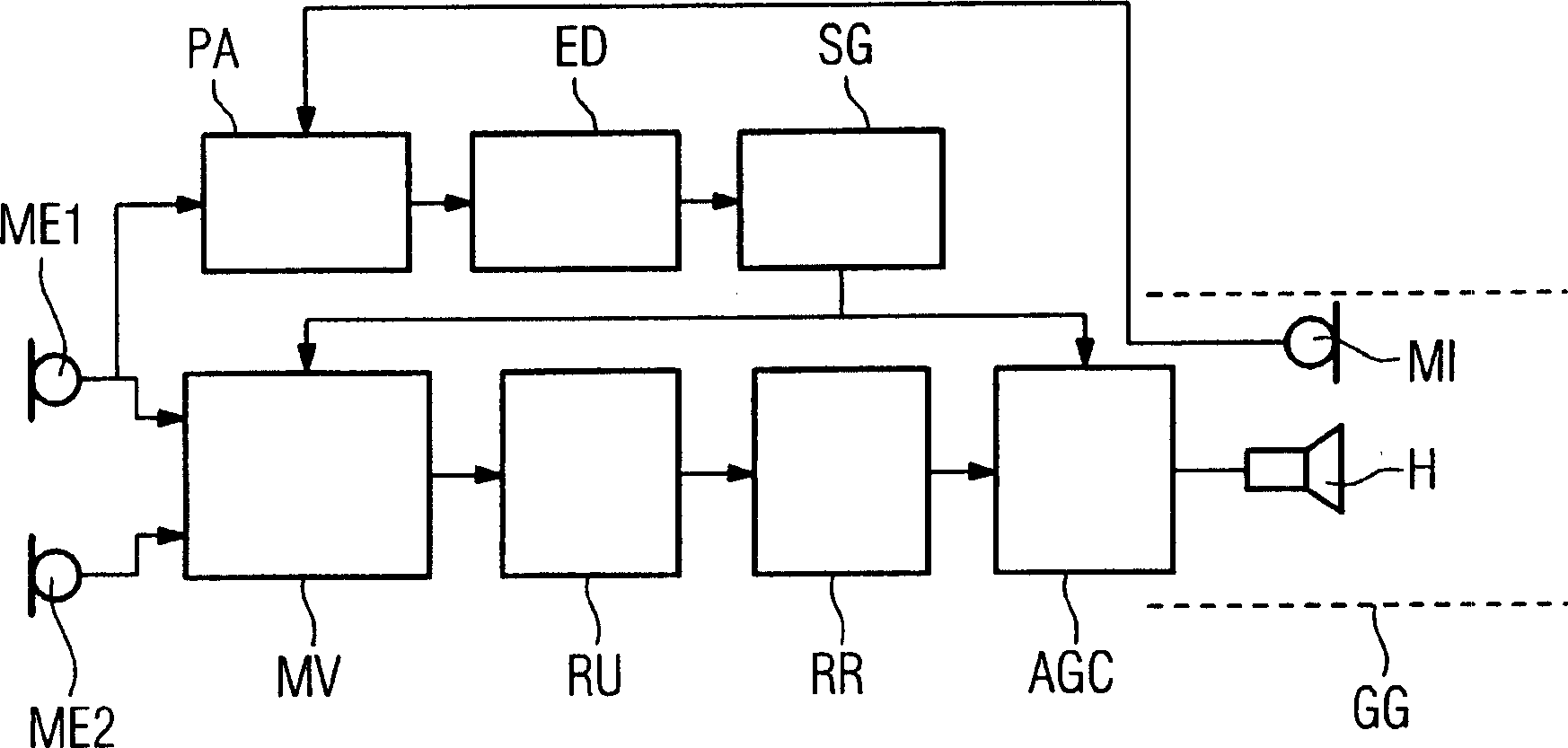Hearing device and corresponding method for ownvoices detection
A hearing aid device and sound technology, applied to hearing aids, electrical components, etc., can solve problems such as interference with effective signal extraction, and achieve the effect of avoiding false images and erroneous control.
- Summary
- Abstract
- Description
- Claims
- Application Information
AI Technical Summary
Problems solved by technology
Method used
Image
Examples
Embodiment Construction
[0021] The examples described in detail below represent preferred embodiments of the invention.
[0022] According to the invention, the problems that arise with AGC, BSS and intelligent directional microphones when the hearing aid wearer speaks by himself are solved by the detection of the own voice by means of a separate ear canal microphone or internal ear canal microphone MI. according to figure 1 , the microphone is located in the ear canal GG like the headset of the hearing aid selected here. In this example, two external microphones ME 1 and ME 2 are located outside the ear canal GG for receiving ambient sound from the environment of the user or hearing aid wearer.
[0023] The basis for the detection of the own voice is a continuous comparison of the signals received by the external hearing aid microphones ME 1 and ME 2 and the internal ear canal microphone MI. For this purpose, a level analysis PA is performed on the microphone signal in this case. The self-sound d...
PUM
 Login to View More
Login to View More Abstract
Description
Claims
Application Information
 Login to View More
Login to View More - R&D
- Intellectual Property
- Life Sciences
- Materials
- Tech Scout
- Unparalleled Data Quality
- Higher Quality Content
- 60% Fewer Hallucinations
Browse by: Latest US Patents, China's latest patents, Technical Efficacy Thesaurus, Application Domain, Technology Topic, Popular Technical Reports.
© 2025 PatSnap. All rights reserved.Legal|Privacy policy|Modern Slavery Act Transparency Statement|Sitemap|About US| Contact US: help@patsnap.com

